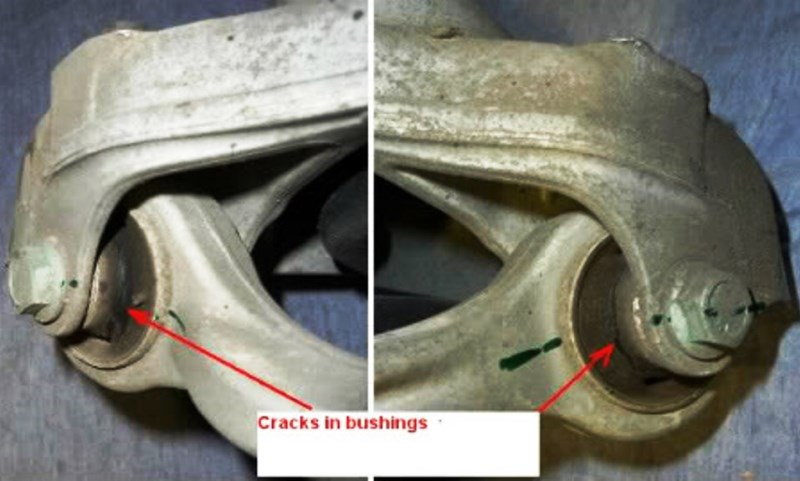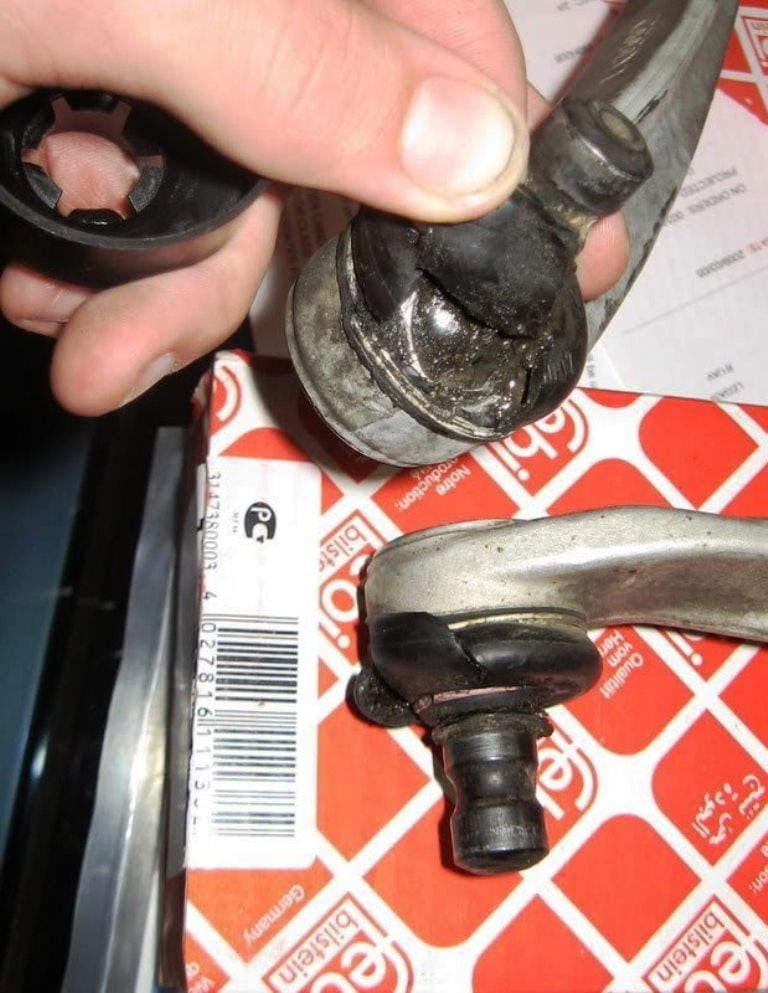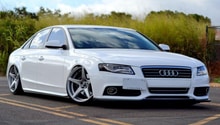Audi Q5: Suspension Performance Diagnostic Guide
Clunks, squeaks and banging noises from the suspension will ruin the mood in your luxury ride, and probably diminish your razor sharp handling, too. Let's find the offending parts and fix or replace them, thus restoring that Audi feeling.
This article applies to the Audi Q5 (2009-2016).
A vehicle's suspension is important to the overall handling, performance and safety of the vehicle. When one or more components in the system have failed, the problem is quite apparent and may be paired with clunking sounds as well as vague steering responses. You may also hear bad unfamiliar sounds when turning the wheel left or right. Many drivers have reported hearing clunks when going over speed bumps at low speeds, which is a common Audi issue. Learn how to diagnose the problem, and save money on the fix.


Materials Needed
- Tire pressure gauge
- Flat head screwdrivers
- Jack
- Jack stands
Step 1 – Check tire pressure
They may have uneven pressure.
If one or more of the tires has too little or too much pressure the vehicle can pull to one side.
- Remove valve cap.
- Press down on valve with tire pressure gauge.
- Record readings for each tire/wheel.
- Fill air as needed.

Pro Tip
In newer Audis, computerized tire pressure monitor sensors will typically warn you if the tire pressure is too low or high as well.
Step 2 – Check for bad control arms
A common suspension issue with Audis are bad control arm bushings.
Audi uses a complex system of control arms for their front suspension, which allows their cars to deliver precision handling, all-wheel drive traction, and a luxury car ride without compromise. However, when one of the control arm bushings cracks, dries out, or otherwise fails, it can lead to noises, play in the steering or inaccurate handling. The ball joins can also go bad at the other end of the control arm. The front control arms are a wear item, with many parts suppliers selling complete kits to rejuvenate the entire front end in one shot.

Here's how to check for bad bushings and ball joints, both of which are included when you buy a replacement control arm.
- Loosen wheel lugs.
- Raise the vehicle and secure with jack stands.
- Remove wheel and set aside.
- Locate the control arm bushings.
- Check for noticeable tearing or cracks in the rubber portion of the bushing.
- Push and pull to check for play.
- Look at ball joints for torn boots.

Figure 4. Orange/red are all the bushings that can go bad, while blue are the ball joints. 
Figure 5. Example of bad ball joint.
Pro Tip
Turn the wheel full lock to get a better view of the upper control arms and the related bushings. The tie rod ends connecting the steering rack to the steering knuckle also have ball joints that can go bad, leading to excess play in the steering and should be check at the same time.
Step 3 – Check the tire wear
A bad wheel alignment often results in odd tire wear.
If you have done any mods to your Q5, your front wheel alignment may be off, and even just in normal driving it can change for the worse.
- Raise the vehicle with a jack and secure with jack stands.
- Turn the wheel by hand and observe the tire tread pattern.
- Consult the chart for the most common cause of the wear pattern observed.
- Visit an alignment shop if uneven wear is found.

Pro Tip
Any aftermarket parts, even rims and tires, can alter the vehicle's handling and ride. Larger tires, or even a different wheel offset, may require a visit to a alignment shop to restore the factory settings.
Step 4 – Check the technical service bulletins
The clunking sound or steering wheel shudder may be a common known issue.
There is an Audi service bulletin number 2024674/1 which suggests replacement of a power steering hose to correct a shudder felt through the steering wheel. There is also Audi service bulletin number 299452 which concerns axle creaking sounds related to a supporting bracket. You can look up all relevant technical service bullitens for your Q5 by year at this link: Audi Q5 TSB
- Your local Audi dealer will deal with any TSB related issues, usually free of charge.
- The service department can easily diagnose the problem and attempt to fix it.
- If your problem is a common one, the service department will have seen it and fixed it before.

Pro Tip
This is a good time to bring up anything you could not check on your own to make sure it is not overlooked.
Related Discussion
- Clunking Noise Discussion - AudiWorld






